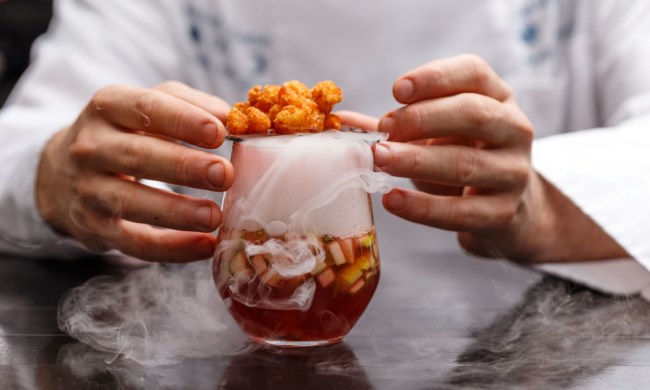When it comes to food prep, there are few things more frustrating than trying to slice through a juicy red tomato only to find your knife is so dull it tears the flesh and seeds, and juice ends up oozing out all over the cutting board. Or maybe you’ve just cooked and rested a beautiful medium-rare steak and go to cut it for serving, only to find you have to saw at it with your dull knife because it’s not sharp enough for clean slicing.
Dull kitchen knives are not only frustrating to use and can make a mess of your food from an aesthetic standpoint but they can also be quite dangerous. A kitchen knife should be sharp enough that you don’t need to exert significant force or pressure to dice, chop, or cut your food, all of which can result in serious injuries. But what’s the best way to sharpen a knife? How often do you need to sharpen kitchen knives? How do you know if you need to sharpen a knife? If you’ve never learned, you’re certainly not alone. Keep reading to learn how to sharpen a knife to make cooking safer and easier.
How Do You Know If You Need To Sharpen a Knife?
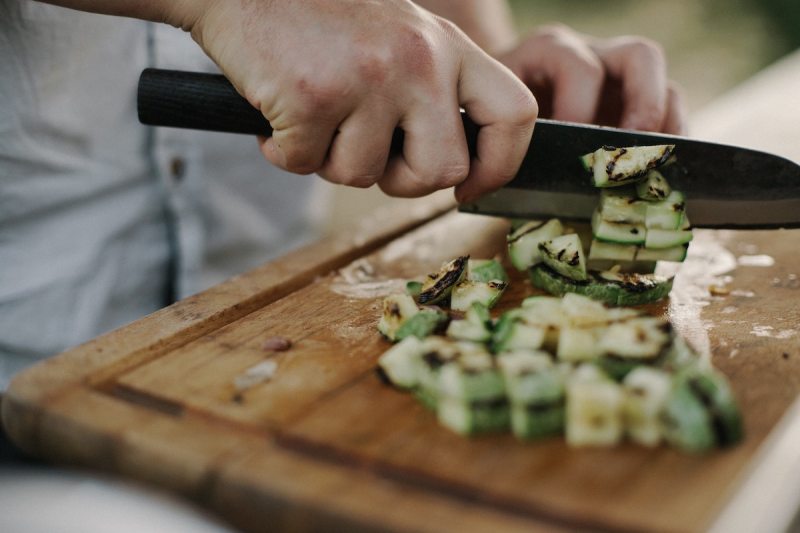
The primary sign that your knives need to be sharpened is the knife giving you resistance when you slice something and have to apply force to cut. For example, if you can’t slice a tomato cleanly without tearing, crushing, or mangling it in some way, your knife is too dull and needs to be sharpened.
To determine if your knife is too dull, you can also perform the paper test. Hold a standard sheet of printer paper up and use your knife to try to slice it vertically. If the knife tears through the paper instead of slicing it cleanly like scissors, it’s too dull and you should take a few minutes to sharpen the knife before using it.
What Angle Should I Use To Sharpen a Knife?
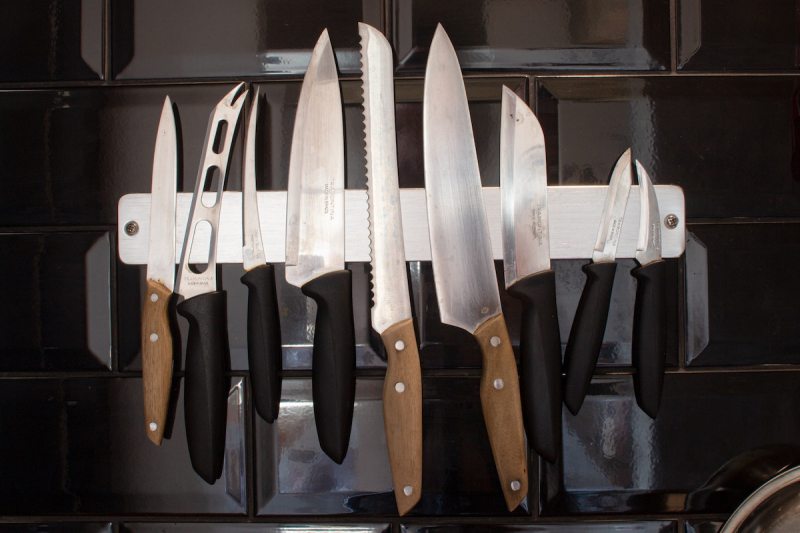
Most new knives come with a manufacturer’s suggested angle for sharpening. If you have this information, follow the angle they recommend. If not, select and use a 15- to 30-degree angle per side, keeping in mind that a shallower angle yields a sharper edge that doesn’t last as long, while steeper angles are less sharp but more durable.
What Is the Best Way To Sharpen a Knife?
There are several ways to sharpen a knife, but using a whetstone is the most common at-home method to sharpen a knife.
- Moisten your whetstone with honing oil or other mineral oil if it’s recommended to lubricate it first. This will depend on the whetstone you use.
- Place the whetstone atop a damp paper towel on a steady surface with the coarse side facing up. This keeps it from sliding.
- Wet the blade of your knife to reduce friction.
- Angle your knife relative to the whetstone in accordance with the manufacturer’s recommendations or at approximately a 17- to 20-degree angle.
- Point the tip of the knife away from you and place your thumb on the handle and your fingers on the flat part of the knife blade away from the sharp edge.
- Maintaining the angle, drag your knife across the whetstone in the direction opposite to the one you’d use to slice a sliver of the whetstone off.
- Grind at this angle several times, and then flip the knife over and use the same angle to grind the other side of the blade.
- Flip the whetstone over to use the finer grit side.
- Repeat the whole process until the knife is sharp and symmetrical.
What’s the Difference Between Honing and Sharpening a Knife?
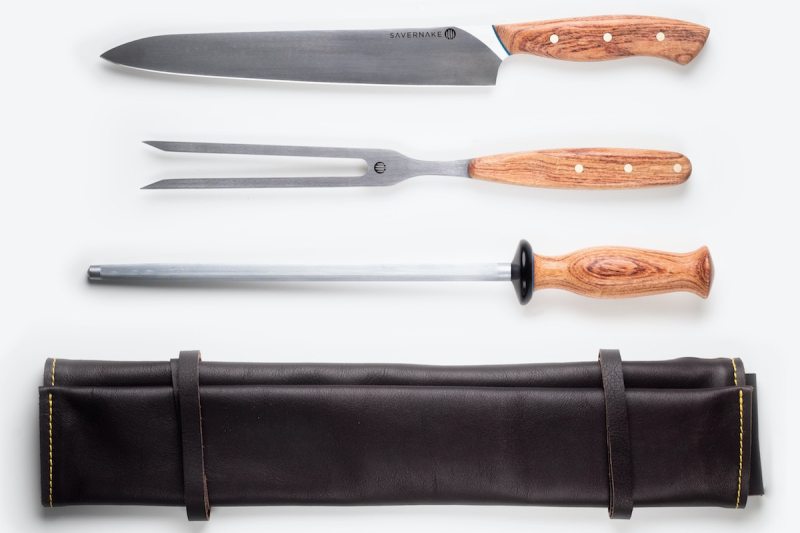
The two most common ways to “sharpen” a knife are to use a whetstone or a honing steel or honing rod; however, while honing and sharpening are often lumped together, they’re actually two different things. Honing refers to straightening out the blade of a knife. Essentially, as you use a knife over time, the blade becomes somewhat bent or curved out of its initial position. Scraping the blade at an angle against the coarse surface of a honing steel helps guide the edge back into its original position, which can help preserve the life of a knife by protecting the integrity of the design and preventing undue material stress. It also makes the knife more balanced and functional as it’s intended to be.
Honing a knife is a more gentle process with more subtle results compared to sharpening a knife. Sharpening a knife involves aggressively polishing the knife against a stone or ceramic surface (harder than a honing steel) to reform the blade and actually shave bits of it away to whittle a sharper blade, so it ages the knife. The difference in the aggressiveness and resulting impact on the knife is why sharpening a knife should be performed only when necessary (a few times per year), but you can hone a knife more often.
How Do You Hone a Knife?
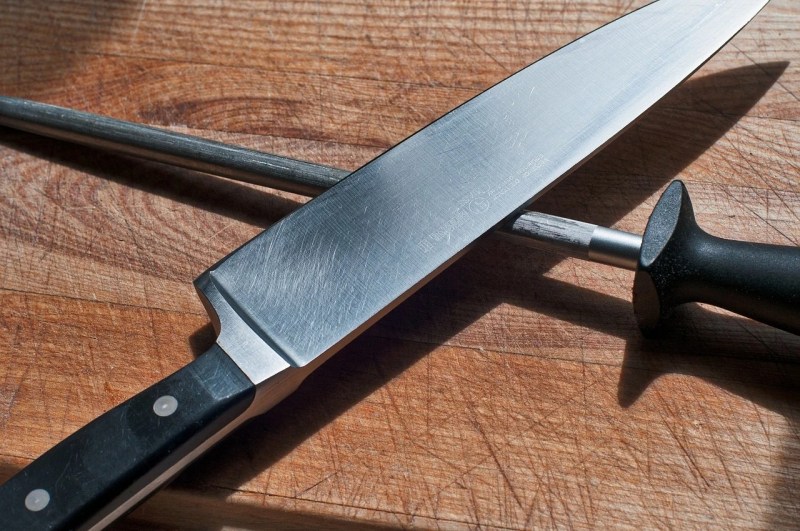
A honing steel, sometimes called a honing rod, is used to hone a knife. It takes a little practice to nail the technique, but stick with it.
- Hold the honing steel in your nondominant hand with the tip pointing up relative to the handle and pointing away from your body.
- Grip the knife handle in your dominant hand with your thumb up along the spine.
- Place the knife at approximately a 20-degree angle relative to the honing rod. Maintaining consistency in the angle is more important than the exact measurement of the angle.
- Keeping the angle, start from the heel of the knife and drag it across the top surface (upward-facing surface) of the honing steel, ending with the tip when you reach the end of the honing steel. You’ll need to move your arm and wrist to make this smooth motion.
- Move the knife to the bottom surface of the honing steel and use the same angle to drag it back from heel to tip.
- Complete six to eight revolutions to hone your knife.
How Can I Sharpen a Knife If I Don’t Have a Whetstone?
If you’ve in a pinch, you can actually use a ceramic coffee mug to sharpen a knife, though this method is not recommended for expensive knives.
- Place an old coffee mug on a stable surface with the bottom of the mug facing up.
- Using a consistent 20-degree angle, drag one side of the blade across the grit of the coffee mug four to six times, and then repeat on the other side of the knife.
- Take four more sweeps of the blade maintaining the same angle, but alternate sides of the blade for each.
- Using a honing steel to hone the knife to even out any kinks.
How Often Do You Need To Sharpen a Knife?
Perhaps the first time you used a new knife was shortly after gifts started trickling in from a wedding registry or you outfitted the kitchen of your first adult home. It’s probably difficult to recall how supremely sharp and precise your knives were at their initial unfurling, because even after just a few weeks of use, a new knife will become dull. Depending on the quality of your knives, how often you use them and for what foods, and how well you care for them and store them, kitchen knives usually need to be sharpened every few months. Plan to sharpen your knives two to four times per year but hone them more frequently.


